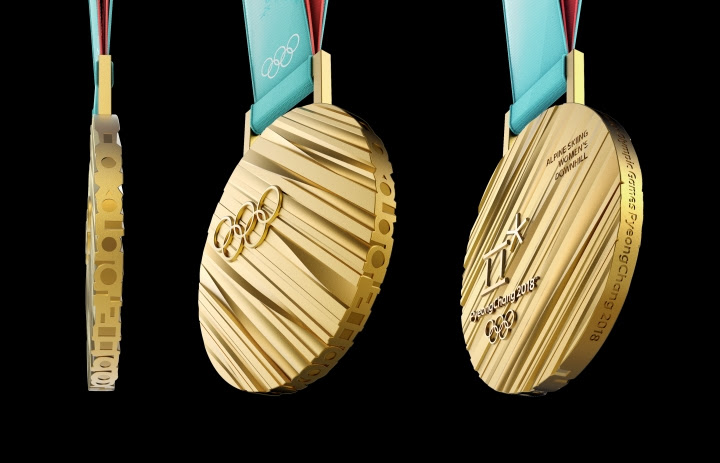정준모
The Story Behind This Year’s Winter Olympics Medal DesignThis year’s Olympic medal design takes its inspiration from the Korean alphabet, as well as from traditional clothing and architecture.

Sukwoo Lee’s design for the 2018 Pyeongchang Olympic medals (photo courtesy Sukwoo Lee)
What’s the most important part of the Olympics? Although the spectacles of athleticism and patriotism are up there, everyone knows it’s all about the medals. But instead of dwelling on how many medals Norway has gotten so far at Pyeongchang (and how few the US has received), we’re taking this opportunity to talk about the design of the physical objects themselves.
Every two years, the International Olympic Committee either holds a competition or chooses an individual or team from the host country to come up with a unique design for that specific Olympics. The design of the Summer Olympics medals is fairly strict — they must always include an image of Nike, the goddess of Victory — but the Winter Olympic medals start from a blank slate, although the designer is usually expected to incorporate the spirit of both the Olympics and the host culture into the medals themselves. This has resulted in a wide variety of designs, forms, and materials.
For this year’s events at Pyeongchang, the Olympics authorities approached Sukwoo Lee, an industrial designer based in Seoul. Lee’s company, SWNA, designs everything from robots to umbrellas and lamps. In an email to Hyperallergic, Lee said he presented five different concepts in the lead-up to the Olympics, all of them inspired by the landscape and culture of Korea. He said the four rejected proposals were “designed using the mountains of Pyeongchang as a motif, or using wind, trees, and Korean traditional ornaments as materials. The inside of the present [design] is the most modern, but it seems that the DNA of Korea is well expressed.”



FAMILY SITE
copyright © 2012 KIM DALJIN ART RESEARCH AND CONSULTING. All Rights reserved
이 페이지는 서울아트가이드에서 제공됩니다. This page provided by Seoul Art Guide.
다음 브라우져 에서 최적화 되어있습니다. This page optimized for these browsers. over IE 8, Chrome, FireFox, Safari